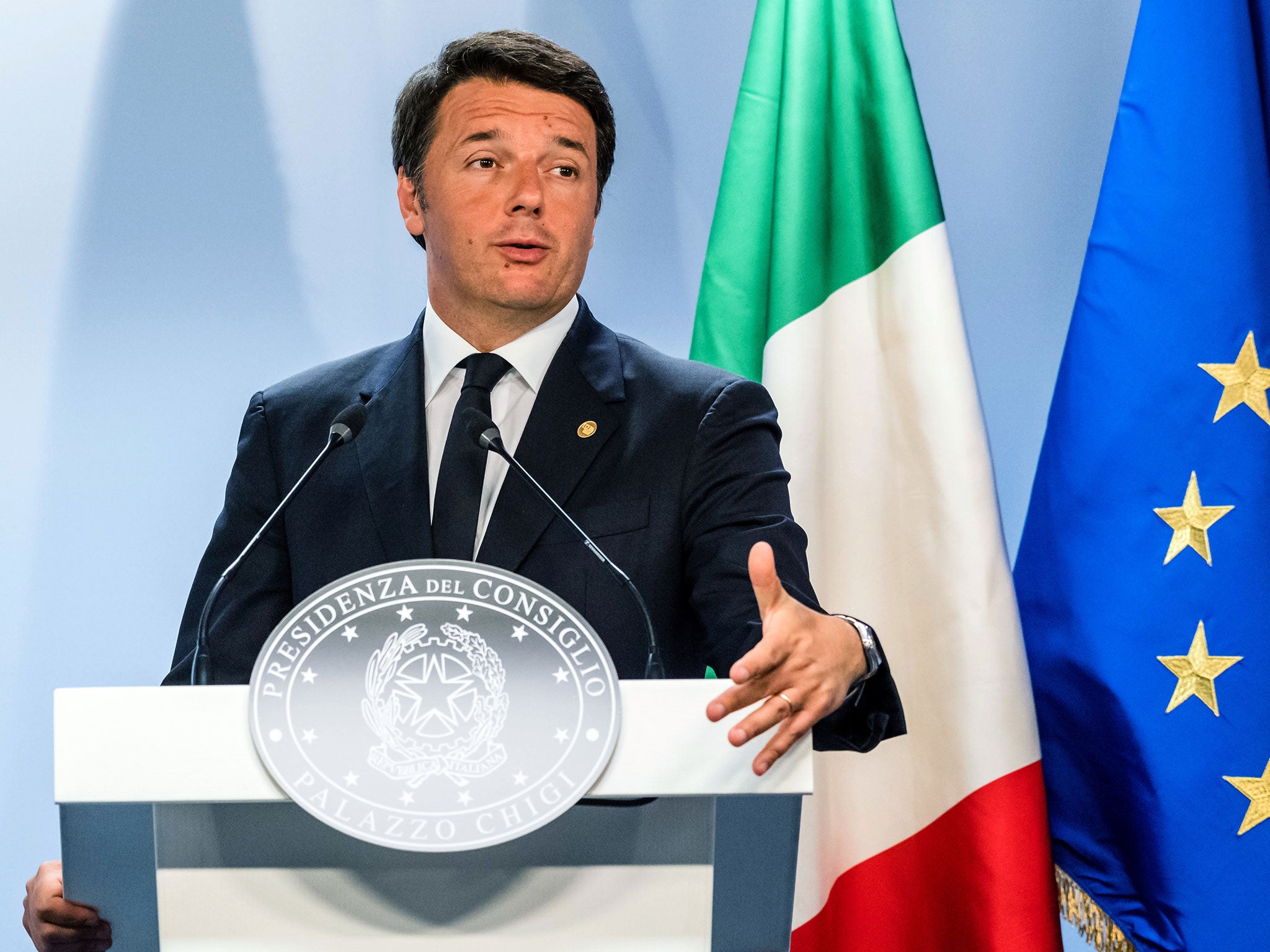Italy earthquake: Prime minister Matteo Renzi declares 'state of emergency' as death toll rises to 267
'We owe it to the history of those towns that they must have a future and not remain just a memory,' says the Italian premier

Your support helps us to tell the story
From reproductive rights to climate change to Big Tech, The Independent is on the ground when the story is developing. Whether it's investigating the financials of Elon Musk's pro-Trump PAC or producing our latest documentary, 'The A Word', which shines a light on the American women fighting for reproductive rights, we know how important it is to parse out the facts from the messaging.
At such a critical moment in US history, we need reporters on the ground. Your donation allows us to keep sending journalists to speak to both sides of the story.
The Independent is trusted by Americans across the entire political spectrum. And unlike many other quality news outlets, we choose not to lock Americans out of our reporting and analysis with paywalls. We believe quality journalism should be available to everyone, paid for by those who can afford it.
Your support makes all the difference.The Italian prime minister has declared a state of emergency following the devastating earthquake which has now claimed more than 260 lives.
Matteo Renzi authorised special measures and millions of euros of funding for the areas close to Rome devastated by the tremors and waves of about 1,000 aftershocks.
In one of the worst natural disasters in the country's history, the death toll has now reached 267 people, with at least 365 others injured.
About 215 people have been rescued since emergency teams began work following the 6.2 magnitude quake which hit on 24 August in towns about 140km (85 miles) east of Rome.
Now Mr Renzi has signed off €50 million of crisis funds for the affected areas, as well as offered to cancel taxes for residents.
"We must think of the reconstruction. We have a moral commitment with the men and women of those communities," he said, according to Italian newspaper La Repubblica.
"We have a duty to those communities that they remain community. We owe it to the history of those towns that they must have a future and not remain just a memory."

Nearly 1,000 aftershocks have rocked the seismic area of Italy's central Apennine Mountains in the two days since the original quake. The biggest aftershock struck with a strength of 4.7, according to the US Geological Service.
Crumbled buildings suffered yet more cracks when the aftershock hit. Since the last person pulled alive from the rubble was found one-and-a-half days ago, ongoing rescue teams say they have less hope of finding anyone alive now.
Three Britons are among the dead from the initial earthquake, including two adults who owned an apartment in the village of Sommati, just outside the badly-affected town of Amatrice. The pair reportedly left behind two children. The teenage son of a family staying with the couple was also killed.
Foreign Secretary Boris Johnson said other Britons affected by the earthquake would receive assistance from Foreign Office staff sent out to the crisis.
Italy sits on two fault lines, making it one of the most seismically active countries in Europe. The earthquake caused damage in three regions - Umbria, Lazio and Marche - and was felt as far away as the southern Italian port city of Naples.
Amatrice, which was voted one of Italy's most beautiful historic towns last year, was shown in aerial photographs to be mostly flattened.
A collective project called Italian Homes will also seek to build residencies in future which will be safe in the event of other earthquakes, said Mr Renzi.
Additional reporting from Associated Press
Join our commenting forum
Join thought-provoking conversations, follow other Independent readers and see their replies
Comments